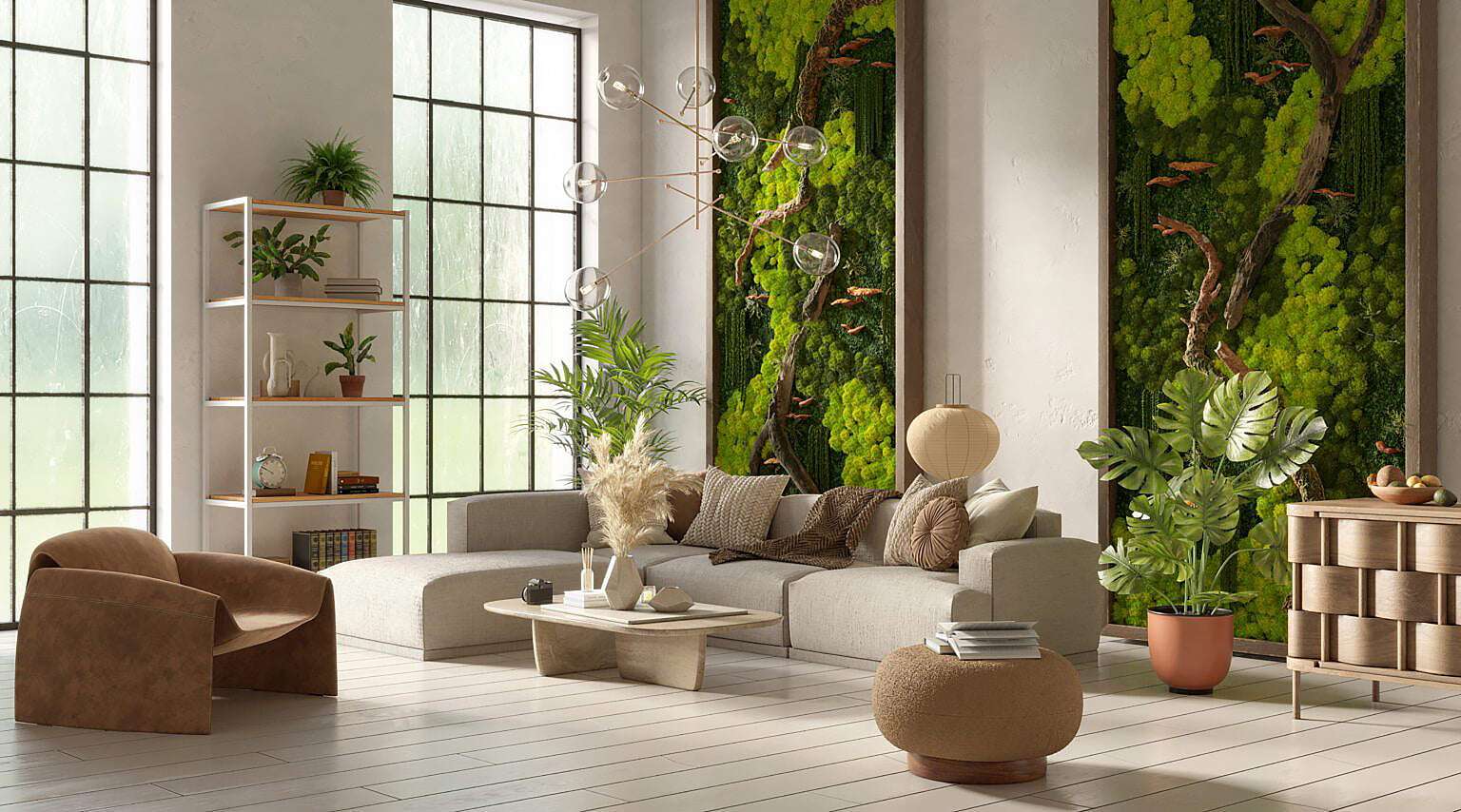
Beyond functioning as simple decoration, indoor plants offer plenty of benefits, from enhancing air quality to promoting relaxation and well-being. With people’s lifestyles becoming increasingly urbanised, there’s a growing desire to reconnect with nature, sparking a global interest in houseplants and indoor gardening.
This article gives you some practical insights and expert tips sourced from experts affiliated with the leading landscape company in Dubai. Whether you’re a beginner or someone with a green thumb, you can elevate your interior aesthetic with this essential guide to indoor landscaping.
Simplicity is key to indoor landscaping.
Start with easy-to-care-for plants to build your confidence in gardening. Managing a few low-maintenance varieties will help you gradually acclimate to the responsibilities of plant care without feeling overwhelmed.
Among a few beginner-friendly options that require minimal attention and can thrive in various indoor environments are:
When you succeed with these low-maintenance plants, you can work your way up to more sensitive varieties like calatheas, philodendrons, and monsteras.
Getting your plants from local nurseries offers numerous advantages.
As local plant specialists possess in-depth knowledge of regional growing conditions, they can provide valuable insights tailored to your specific environment.
In some cases, local gardening and landscaping companies also offer personalised assistance, from picking out the right plants for your space to providing guidance on care and maintenance.
Moreover, plants sourced locally are often healthier and better adapted to the local climate. This means they are less susceptible to transplant shock and disease.
When you embrace the expertise and support available at your local garden centre, you can kickstart your indoor landscaping journey confidently.
If you want to create visual interest in indoor landscaping, you need to embrace diverse plant arrangements.
Incorporating plants of different heights and widths adds depth and dimension to your indoor space. The variations in size offer a more organic and dynamic look compared to uniform arrangements.
Large plants and trees like Boston fern and fiddle leaf figs can serve as striking focal points that brighten living areas. You can cluster plants of different sizes together for a dramatic effect. Then, place a single oversized variety strategically to make a bold statement.
Choose more modest-sized plants that can eventually grow bigger with proper care. If you prefer smaller plants, utilising plant stands adds height and visual interest to your displays.
Landscaping experts also recommend having odd-numbered groupings to create a sense of balance and informality in your indoor garden. This is because odd-numbered groupings appear more natural and relaxed than even-numbered arrangements, which can feel overly symmetrical and formal in some settings.
When mixing and matching plants for your indoor garden, consider the interplay of leaf shapes, growth patterns, and colours to create captivating displays.
Combine plants with contrasting leaf shapes and hues to inject visual intrigue and depth to your arrangements. For example, you can pair a squat, trailing plant like pothos with tall, upright flora such as a fiddle-leaf fig, creating a harmonious yet dynamic composition.
Next, pay attention to the colours of the plants you choose to ensure a cohesive look. Combining plants with leaves of the same hue can create a sense of unity, while opting for greenery in different colours adds variety and interest to your space.
Also, don’t avoid incorporating flowering plants into your indoor landscape. African violets, bromeliads, and begonias bring vibrant blooms and lush greenery into your home, while plants like croton and calathea offer striking foliage in various hues.
Selecting plants that match your interior design style enhances the overall aesthetic of your space.
For a mid-century modern interior design style, consider statement plants like the fiddle leaf fig or rubber tree paired with sleek, tall-legged planters. These add sophistication and drama to your decor.
If you prefer the farmhouse aesthetic, choose functional plants like herbs or aloe displayed in vintage metal planters or repurposed pots. Eucalyptus, arrowhead vine, and succulents also blend seamlessly with rustic farmhouse decor, bringing a touch of nature indoors.
Decorative plant containers play a crucial role in elevating the aesthetic appeal of indoor landscaping.
Choose pots that not only complement your plants but also harmonise with your interior decor. Experiment with different materials, colours, and textures to create visual interest.
Consider leaving your plants in their nursery pots and placing them inside larger decorative planters to add a sense of style.
Explore creative ideas such as plant stands, hangers, and DIY plant shelves to showcase your plants and enhance their visual impact. Whether traditional or unconventional, decorative plant containers let you express your personal style and improve your indoor space at the same time.
Knowing the specific needs of your indoor plants is key to their overall health and well-being. When selecting plants for different rooms, consider humidity, temperature, and light requirements to ensure optimal growth.
Grouping plants with similar needs together creates microclimates that mimic their natural habitats. For instance, clustering ferns with other humidity-loving plants like orchids and peace lilies creates a moist environment ideal for their growth.
Also, the high humidity in bathrooms provides an ideal environment for moisture-loving plants like ferns, orchids, and peace lilies.
As for temperature and light conditions, placing shade-loving plants in darker corners or rooms with limited sunlight ensures they thrive without being deprived of their essential needs. Excellent examples include:
Adding these plants in strategic areas of your home enhances the aesthetic appeal of the space and contributes to a healthier indoor environment.
Incorporate easy-care plants, match them with your interior style, and adapt their care to room conditions for a flourishing indoor landscape.
Don’t hesitate to seek guidance from local nurseries or consider professional landscape maintenance services for long-term care. Embark on your indoor gardening journey with confidence today.



